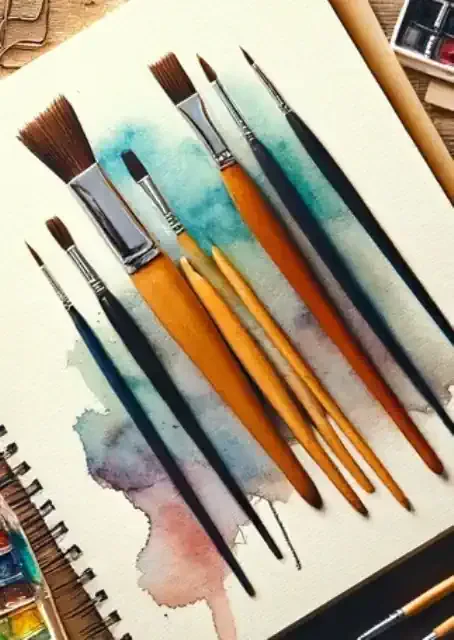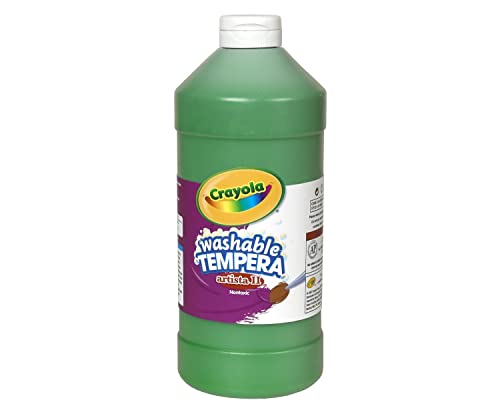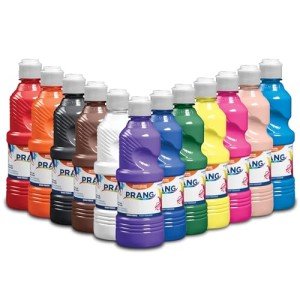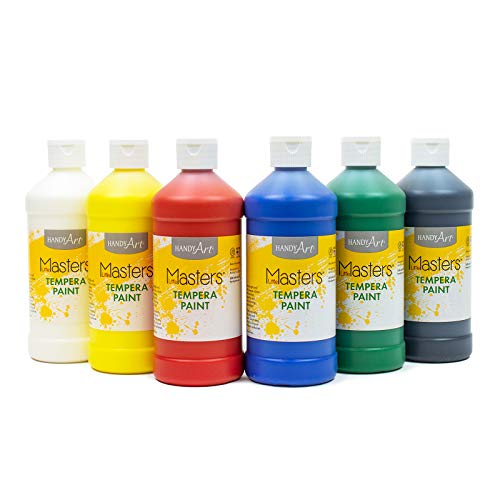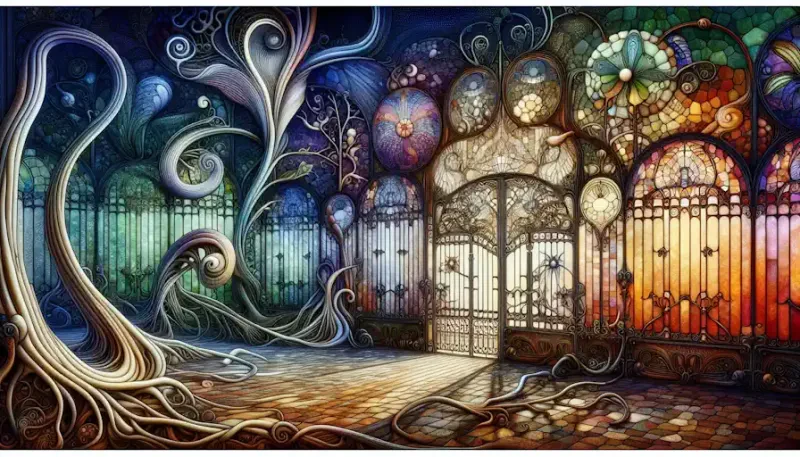Introduction
Choosing the right art supplies is an essential step for every aspiring artist, akin to selecting the perfect tools for any craft. The journey into the world of art can be simultaneously exhilarating and daunting, especially for beginners navigating through the vast array of options available in the market. Hence, this guide aims to streamline the process by offering comprehensive insights into the must-have art supplies tailored specifically for novices.
Importance of Choosing the Right Art Supplies
The significance of selecting the appropriate art supplies cannot be overstated. Just as a chef relies on quality ingredients to craft a delicious meal, an artist relies on superior tools to bring their creative visions to life. The right supplies not only facilitate artistic expression but also enhance the learning process, providing a solid foundation upon which budding talents can flourish.
Overview of the Article Content
This article is structured to provide a holistic overview of the essential art supplies that every beginner should consider investing in. Divided into several sections, each segment delves into a distinct category of supplies, ranging from drawing utensils to surface preparation materials. By organizing the content in this manner, readers can easily navigate through the different aspects of art supplies, gaining valuable insights and guidance at every step.
Brief Explanation of Beginner-Friendly Criteria
In selecting the recommended art supplies for beginners, several criteria have been considered to ensure accessibility, versatility, and affordability. The chosen supplies are suitable for individuals at various skill levels, with an emphasis on ease of use and adaptability. Furthermore, budget-friendly options have been included to accommodate those with financial constraints, ensuring that aspiring artists can embark on their creative journey without breaking the bank.
As we embark on this exploration of essential art supplies, it is essential to approach the journey with an open mind and a sense of curiosity. Whether you're an absolute beginner or someone looking to refresh their toolkit, this guide aims to provide valuable insights and recommendations to support your artistic endeavors. So, let's delve into the world of art supplies and unleash the creativity within!
Drawing Supplies
Embarking on the journey of art often begins with a simple stroke of a pencil, making drawing supplies a fundamental cornerstone for any aspiring artist. From sketching initial concepts to creating intricate masterpieces, the right drawing tools can make all the difference in the world. In this section, we will explore a range of essential drawing supplies tailored specifically for beginners, providing insights into their functionality, versatility, and suitability for various artistic endeavors.
Pencils
Pencils are perhaps the most iconic and versatile drawing tool, favored by artists of all skill levels for their precision and adaptability. For beginners, a basic set of graphite pencils ranging from H (hard) to B (soft) is highly recommended. These pencils offer varying degrees of darkness and line thickness, allowing artists to experiment with different shading techniques and line weights. Additionally, mechanical pencils provide consistent line widths and are ideal for detailed drawings requiring precision.
Sketchbooks
A sketchbook serves as a portable canvas for artists to unleash their creativity anytime, anywhere. For beginners, a medium-sized sketchbook with acid-free paper is an excellent choice, offering a smooth surface for drawing and sketching. Spiral-bound sketchbooks allow for easy flipping of pages and provide a flat surface for drawing, while hardbound sketchbooks offer durability and protection for artwork. Opt for a sketchbook with heavyweight paper to prevent bleed-through and ensure longevity of your creations.
Erasers
Erasers are indispensable tools for correcting mistakes and refining details in drawings. For beginners, a kneaded eraser is highly recommended for its versatility and ability to mold into various shapes for precise erasing. Additionally, a plastic eraser or vinyl eraser is suitable for erasing larger areas and achieving clean, smudge-free results. Experiment with different types of erasers to find the ones that best suit your drawing style and preferences.
Blending Stumps
Blending stumps, also known as tortillons, are essential tools for blending and smudging graphite, charcoal, or pastel drawings. These cylindrical tools are made of tightly rolled paper and come in various sizes to accommodate different drawing techniques and preferences. Beginners can use blending stumps to achieve smooth transitions between tones and create subtle gradients in their artwork. With practice, blending stumps become indispensable companions in the artist's toolkit, enabling them to achieve professional-looking results with ease.
As you embark on your artistic journey with these essential drawing supplies, remember that experimentation and practice are key to unlocking your creative potential. Whether you're sketching simple outlines or rendering intricate compositions, these tools are designed to support and inspire you every step of the way. So, pick up your pencils, open your sketchbook, and let your imagination soar as you explore the boundless possibilities of drawing!
Painting Supplies
While drawing lays the foundation for artistic expression, painting adds depth, vibrancy, and dimension to creative endeavors. From bold brushstrokes to delicate washes of color, painting supplies offer a myriad of possibilities for self-expression and exploration. In this section, we will delve into the essential painting supplies that every beginner artist should consider adding to their toolkit, providing insights into their functionality, versatility, and suitability for various painting techniques.
Paintbrushes
Paintbrushes are the artist's primary tools for applying paint to a surface, making them essential components of any painting endeavor. For beginners, a basic set of synthetic brushes in various shapes and sizes is recommended. Round brushes are versatile and suitable for a wide range of painting techniques, while flat brushes are ideal for covering large areas and creating sharp edges. Additionally, filbert brushes are excellent for blending and softening edges, while detail brushes allow for precision and fine detailing. Experiment with different brush types to discover the ones that best suit your painting style and preferences.
Paints (Watercolor, Acrylic, or Oil)
The choice of paint medium depends on personal preference, painting style, and desired effects. Watercolor paints are transparent and fluid, allowing for delicate washes and subtle layering of colors. Acrylic paints dry quickly and can be used on various surfaces, offering versatility and vibrant color saturation. Oil paints have a rich, creamy consistency and longer drying times, enabling artists to blend colors seamlessly and achieve luminous, textured effects. For beginners, a basic set of student-grade paints in primary colors is a great starting point, allowing for color mixing and experimentation without overwhelming complexity.
Palette
A palette serves as a mixing surface for paints, allowing artists to blend colors, test hues, and control paint consistency. For beginners, a simple palette with wells for holding paint and a flat surface for mixing is sufficient. Disposable palette pads are convenient and easy to clean, while traditional wooden palettes offer durability and a stable surface for mixing paint. Consider investing in a palette knife for mixing paint and applying it to the canvas, providing greater control and precision in your painting process.
Canvas or Paper
The choice of painting surface depends on the desired aesthetic and painting medium. Canvas is a popular choice for acrylic and oil painting, providing a sturdy and textured surface for applying paint. Stretched canvas panels are pre-primed and ready for painting, offering convenience and ease of use for beginners. Alternatively, watercolor paper is designed specifically for watercolor painting, with varying textures and weights to suit different painting techniques. Experiment with different surfaces to discover the ones that best complement your painting style and artistic vision.
As you explore the world of painting with these essential supplies, remember to embrace experimentation, practice, and self-expression. Whether you're creating vibrant landscapes, expressive portraits, or abstract compositions, painting offers endless possibilities for artistic exploration and discovery. So, pick up your brushes, squeeze out some paint, and let your imagination run wild as you embark on your painting journey!
Coloring Supplies
Coloring supplies add vibrancy, depth, and personality to artistic creations, transforming simple sketches into captivating works of art. From richly pigmented pencils to bold and versatile markers, coloring supplies offer endless possibilities for self-expression and creativity. In this section, we will explore a range of essential coloring supplies that every beginner artist should consider adding to their toolkit, providing insights into their functionality, versatility, and suitability for various coloring techniques.
Colored Pencils
Colored pencils are versatile and portable tools for adding color to drawings and illustrations. For beginners, a basic set of colored pencils with a wide range of hues is recommended. Wax-based pencils offer vibrant color saturation and smooth application, while oil-based pencils provide rich, blendable colors and enhanced durability. Watercolor pencils can be used dry for traditional coloring or wet for painterly effects, making them a versatile option for artists exploring different coloring techniques. Experiment with layering, blending, and shading to create depth and dimension in your artwork.
Markers
Markers are popular coloring tools known for their bold, vibrant colors and ease of use. For beginners, a set of alcohol-based markers or water-based markers is recommended. Alcohol-based markers offer seamless blending and layering of colors, making them ideal for creating smooth gradients and dynamic color transitions. Water-based markers are water-soluble and can be blended with a wet brush to create painterly effects, adding versatility and texture to your coloring projects. Experiment with different marker brands and tip sizes to discover the ones that best suit your coloring style and preferences.
Pastels
Pastels are soft, chalk-like drawing tools known for their rich, velvety texture and vibrant color pigments. For beginners, a set of soft pastels or oil pastels is recommended. Soft pastels can be applied directly to paper for bold, expressive strokes, while oil pastels offer a creamy consistency and can be blended with a finger or blending tool for smooth, painterly effects. Pastel pencils are also available for finer details and precise shading, providing additional versatility and control in your coloring projects. Experiment with different pastel techniques, such as layering, blending, and scumbling, to create unique and expressive artworks.
Coloring Books or Pages
Coloring books or pages provide a structured and guided approach to coloring, making them ideal for beginners looking to practice their coloring skills and explore different techniques. Choose coloring books or pages with a variety of themes and designs, ranging from intricate mandalas to whimsical illustrations. Additionally, printable coloring pages are readily available online, offering endless options for coloring enthusiasts of all ages. Whether you prefer botanical motifs, geometric patterns, or fantastical creatures, coloring books provide a relaxing and enjoyable way to unleash your creativity and express yourself through color.
As you dive into the world of coloring with these essential supplies, remember to embrace experimentation, playfulness, and imagination. Whether you're blending colors with pencils, layering hues with markers, or creating texture with pastels, coloring offers endless opportunities for artistic exploration and self-discovery. So, grab your favorite coloring supplies, find a cozy spot to work, and let your creativity soar as you bring your colorful visions to life!
Surface Preparation Supplies
Surface preparation supplies lay the groundwork for successful artistic endeavors, providing a stable and primed canvas for creative expression. From primers that seal and protect surfaces to gesso that provides a smooth and absorbent foundation, surface preparation supplies play a crucial role in ensuring the longevity and quality of artwork. In this section, we will explore a range of essential surface preparation supplies that every beginner artist should consider adding to their toolkit, providing insights into their functionality, versatility, and suitability for various artistic mediums.
Primers
Primers are coatings applied to surfaces to seal and prepare them for painting or drawing. For beginners, a universal primer suitable for a variety of surfaces is recommended. Acrylic gesso is a popular primer choice for its versatility, adhesion, and fast drying time. It provides a smooth and absorbent surface for acrylic, oil, and mixed media artwork, allowing for better paint adhesion and color saturation. Gesso can be applied to canvas, wood, paper, or other porous surfaces using a brush, roller, or palette knife. Experiment with different primer thicknesses and application techniques to achieve the desired texture and finish for your artwork.
Gesso
Gesso is a specific type of primer made from a mixture of acrylic polymer emulsion, calcium carbonate (chalk), and pigment. It is used to prime canvases and other surfaces before painting to create a smooth and absorbent surface. For beginners, pre-primed canvases or boards are convenient options that eliminate the need for applying gesso separately. However, if you prefer to prime your surfaces yourself, acrylic gesso is available in both white and clear formulations. White gesso provides a bright and opaque base for painting, while clear gesso allows the natural texture and color of the surface to show through. Apply gesso with a brush or palette knife in thin, even coats, allowing each layer to dry completely before applying additional coats.
Sandpaper
Sandpaper is a versatile tool used for smoothing, roughening, and shaping surfaces in preparation for painting or drawing. For beginners, a variety pack of sandpaper with different grits is recommended. Coarse-grit sandpaper (60-100 grit) is suitable for roughening smooth surfaces and removing imperfections, while fine-grit sandpaper (150-220 grit) is ideal for smoothing rough surfaces and preparing them for painting or drawing. Sandpaper can be used to sand wooden panels, canvas boards, or paper surfaces to achieve the desired texture and finish for your artwork. Experiment with different sandpaper grades and techniques to achieve the perfect surface preparation for your artistic endeavors.
As you prepare your surfaces for artistic exploration with these essential supplies, remember to take your time and pay attention to detail. Surface preparation sets the stage for successful artwork, providing a solid foundation upon which your creative visions can unfold. So, gather your primers, gesso, and sandpaper, and let your imagination soar as you embark on your artistic journey!
Mixed Media Supplies
Mixed media supplies offer the freedom to explore, experiment, and combine various artistic mediums to create dynamic and multidimensional artworks. From collage materials to adhesives and cutting tools, mixed media supplies provide endless possibilities for creative expression and innovation. In this section, we will explore a range of essential mixed media supplies that every beginner artist should consider adding to their toolkit, providing insights into their functionality, versatility, and suitability for various artistic techniques.
Glue
Glue is a fundamental adhesive used in mixed media art to adhere various materials to surfaces. For beginners, a versatile and archival-quality glue suitable for a variety of materials is recommended. PVA (polyvinyl acetate) glue is a popular choice for its strong bond, fast drying time, and archival properties. It can be used to adhere paper, fabric, wood, and other porous materials to canvas, paper, or board surfaces. Additionally, glue sticks are convenient for adhering lightweight materials such as paper and cardstock. Experiment with different types of glue to find the ones that best suit your mixed media projects and preferences.
Scissors
Scissors are essential tools for cutting and shaping various materials in mixed media art. For beginners, a pair of sharp, durable scissors with comfortable handles is recommended. Precision scissors with fine tips are ideal for cutting intricate shapes and details, while larger scissors are suitable for cutting thicker materials such as fabric and cardboard. Additionally, craft knives or utility knives are useful for cutting precise lines and shapes, especially when working with thicker or more rigid materials. Invest in a quality pair of scissors and keep them sharp to ensure clean and precise cuts in your mixed media projects.
Collage Materials
Collage materials are diverse and varied, ranging from paper scraps and fabric swatches to found objects and ephemera. For beginners, a collection of assorted collage materials in different textures, colors, and patterns is recommended. These may include scrapbook paper, magazine clippings, tissue paper, fabric scraps, ribbons, buttons, beads, and other found objects. Collect materials that inspire you and reflect your interests, hobbies, and personal aesthetic. Experiment with layering, overlapping, and arranging collage materials to create visually dynamic and conceptually rich artworks that tell a story or convey a message.
As you explore the world of mixed media art with these essential supplies, remember to embrace experimentation, spontaneity, and creative intuition. Mixed media art encourages you to push boundaries, break rules, and think outside the box, allowing for endless possibilities and discoveries along the way. So, gather your glue, scissors, and collage materials, and let your imagination run wild as you embark on your mixed media journey!
Accessories
Accessories are the unsung heroes of the artist's toolkit, providing comfort, convenience, and organization to enhance the creative process. From ergonomic drawing boards to sturdy easels and protective aprons, accessories play a crucial role in supporting artists as they bring their creative visions to life. In this section, we will explore a range of essential accessories that every beginner artist should consider adding to their toolkit, providing insights into their functionality, versatility, and suitability for various artistic endeavors.
Drawing Board
A drawing board provides a stable and adjustable surface for drawing, sketching, and illustrating. For beginners, a lightweight and portable drawing board with a smooth, flat surface is recommended. Drawing boards come in various sizes and materials, including wood, plastic, and aluminum. Look for a drawing board with a built-in clip or elastic band to secure paper or sketchbooks in place while you work. Additionally, some drawing boards feature adjustable angles, allowing you to work comfortably whether sitting at a desk or standing at an easel. Invest in a quality drawing board to ensure a stable and ergonomic drawing surface for your artistic endeavors.
Easel
An easel is a versatile and essential tool for supporting canvases, panels, or boards while painting or drawing. For beginners, a lightweight and adjustable easel suitable for various canvas sizes is recommended. Tabletop easels are compact and portable, making them ideal for small-scale artworks and limited workspace. Tripod easels are sturdy and adjustable, providing stability and versatility for larger canvases or outdoor painting sessions. Some easels feature adjustable height and tilt angles, allowing you to customize your working position for optimal comfort and ergonomics. Whether painting in the studio or plein air, an easel is a valuable accessory that enhances the painting experience and supports your artistic practice.
Apron
An apron provides protection for clothing and prevents paint or other art materials from staining or soiling your attire during creative sessions. For beginners, a lightweight and durable apron made from washable fabric is recommended. Choose an apron with adjustable straps and multiple pockets for holding brushes, pencils, and other small tools. Additionally, consider opting for an apron with a water-resistant or stain-resistant coating for added protection against spills and splatters. An apron not only keeps you clean and tidy but also serves as a practical and stylish accessory that complements your artistic practice.
Storage Containers
Storage containers are essential for organizing and storing art supplies, keeping your workspace neat, tidy, and clutter-free. For beginners, a collection of storage containers in various sizes and styles is recommended. Clear plastic bins or stackable drawers are ideal for storing paints, brushes, pencils, and other small art supplies. Additionally, caddies or toolboxes with compartments are useful for organizing and transporting supplies between your workspace and storage area. Consider labeling containers or using transparent bins to easily identify and access supplies when needed. Invest in quality storage solutions to keep your art supplies organized and accessible, allowing you to focus on your creative process without distractions.
As you accessorize your artistic toolkit with these essential accessories, remember to prioritize comfort, functionality, and organization. Accessories play a vital role in supporting and enhancing your creative practice, allowing you to work more efficiently and comfortably while bringing your artistic visions to life. So, invest in quality accessories that suit your needs and preferences, and enjoy the benefits of a well-equipped and organized workspace!
Extras for Experimentation
In the realm of art, experimentation is key to growth and innovation. Extras for experimentation encompass a diverse range of tools and materials that invite artists to push boundaries, explore new techniques, and unleash their creative potential. From masking tape for creating crisp edges to rulers for precise measurements and templates for consistent shapes, these extras offer endless possibilities for artistic exploration and discovery. In this section, we will explore a variety of extras for experimentation that every beginner artist should consider adding to their toolkit, providing insights into their functionality, versatility, and potential for creative expression.
Masking Tape
Masking tape is a versatile tool used in various art techniques to create crisp edges, mask areas, and achieve clean, precise results. For beginners, a roll of low-tack masking tape in a standard width is recommended. Masking tape can be used to create straight lines, block off sections, or mask areas while painting, drawing, or applying mixed media. Additionally, it can be easily removed without damaging the underlying surface, making it an invaluable tool for achieving sharp and defined edges in your artwork. Experiment with different masking techniques to add depth, dimension, and visual interest to your creations.
Rulers
Rulers are essential tools for precise measurements, straight lines, and accurate proportions in art and design. For beginners, a clear plastic ruler with markings in inches and centimeters is recommended. A straightedge ruler is ideal for drawing straight lines, while a T-square ruler or triangle ruler is useful for creating perpendicular or angled lines. Additionally, a flexible curve ruler or French curve ruler is handy for drawing smooth curves and irregular shapes. Whether drafting sketches, measuring proportions, or creating geometric patterns, rulers provide precision and consistency in your artistic endeavors.
Templates
Templates are pre-cut stencils or patterns used to create consistent shapes, designs, and motifs in art and craft projects. For beginners, a collection of basic templates in various shapes and sizes is recommended. These may include geometric shapes such as circles, squares, triangles, and ovals, as well as common motifs such as hearts, stars, flowers, and animals. Templates can be made from plastic, metal, or paper and can be used with pencils, pens, paints, or other drawing and coloring materials. Experiment with layering, overlapping, and repeating templates to create visually dynamic and intricate designs in your artwork.
Calligraphy Pens
Calligraphy pens are specialized writing instruments used for creating elegant and decorative lettering in art, design, and handwriting. For beginners, a set of basic calligraphy pens with interchangeable nibs is recommended. These pens come in various nib sizes and styles, including broad-edge, pointed, and brush tips, allowing you to achieve a variety of lettering styles and effects. Additionally, calligraphy markers or brush pens are convenient alternatives for beginners who are new to dip pens and ink. Experiment with different pen widths, pressures, and strokes to develop your calligraphy skills and create beautiful lettering in your artwork.
As you explore the realm of artistic experimentation with these extra tools and materials, remember to embrace curiosity, playfulness, and innovation. Extras for experimentation offer endless possibilities for creative exploration and discovery, allowing you to push boundaries, challenge conventions, and express yourself in new and exciting ways. So, gather your masking tape, rulers, templates, and calligraphy pens, and embark on a journey of artistic discovery as you unleash your creative potential!
Conclusion
As we come to the end of our exploration into the must-have art supplies for beginners, it's essential to reflect on the journey we've embarked upon and the wealth of knowledge we've acquired along the way. From drawing and painting supplies to coloring tools, surface preparation materials, mixed media supplies, accessories, and extras for experimentation, we've covered a diverse range of essential tools and materials that lay the foundation for artistic expression and creativity.
Throughout this article, we've emphasized the importance of choosing the right art supplies tailored to the needs and preferences of beginner artists. By selecting supplies that are accessible, versatile, and budget-friendly, aspiring artists can embark on their creative journey with confidence and enthusiasm. Whether sketching simple outlines, painting vibrant landscapes, or experimenting with mixed media techniques, the right supplies serve as invaluable companions, supporting and inspiring artistic exploration and innovation.
As you begin your artistic journey armed with the knowledge and recommendations provided in this article, remember that the path to artistic growth is paved with curiosity, experimentation, and practice. Embrace the joy of creation, celebrate your successes, and learn from your mistakes as you navigate the exciting and rewarding world of art. Whether you're a complete novice or a seasoned artist looking to refresh your toolkit, may this guide serve as a valuable resource and source of inspiration on your creative path.
With each stroke of the brush, pencil, or pen, may you discover new possibilities, uncover hidden talents, and express your unique perspective on the world. Whether you're creating art for personal enjoyment, self-expression, or professional pursuit, may your artistic journey be filled with joy, fulfillment, and endless creative exploration. So, pick up your favorite art supplies, unleash your imagination, and let your creativity soar as you embark on the wonderful adventure of artistry!
